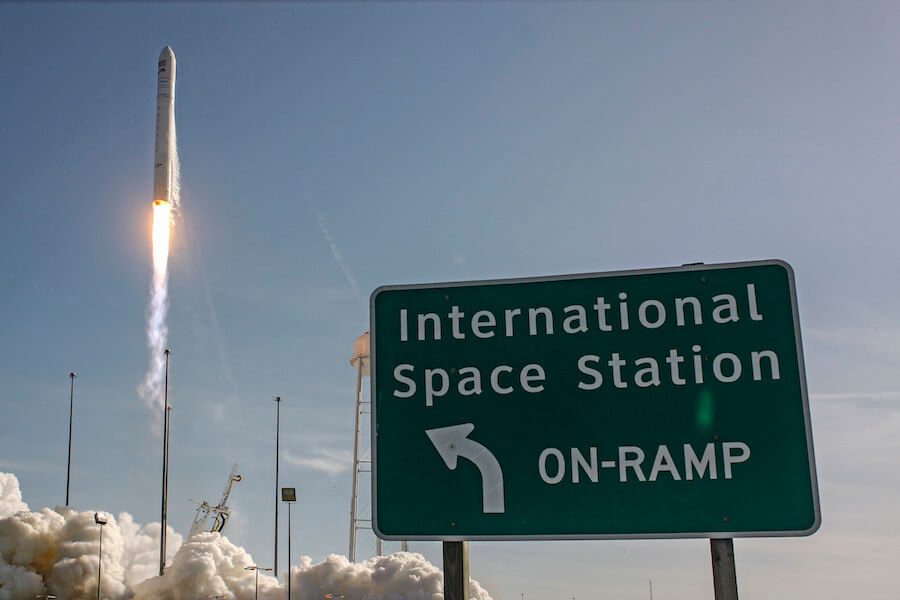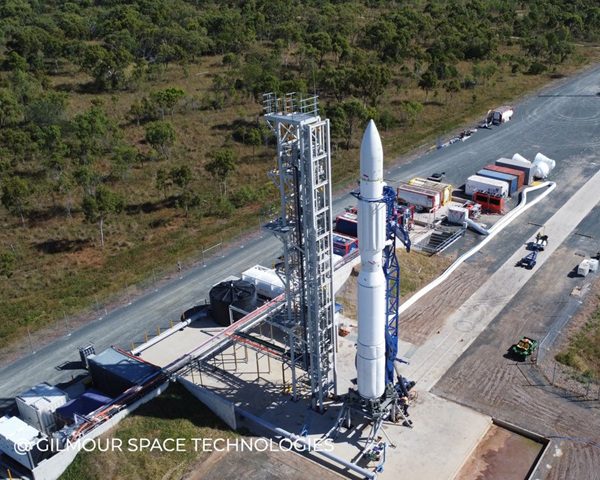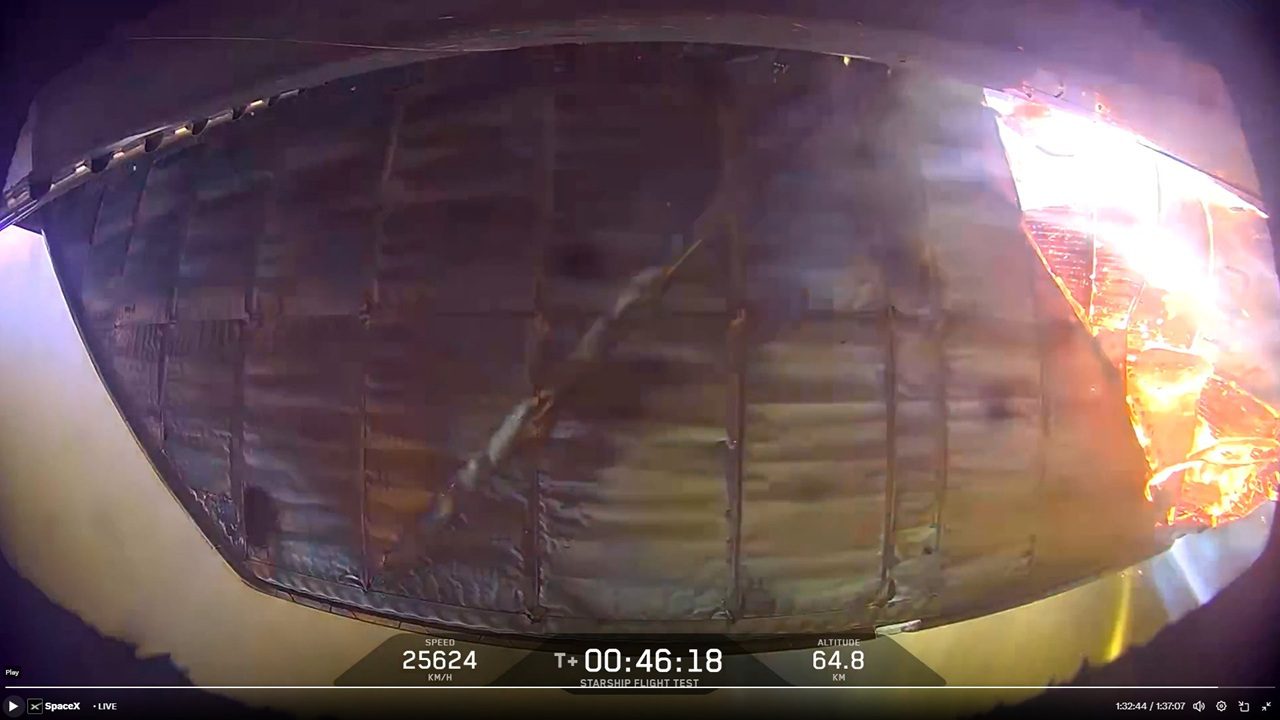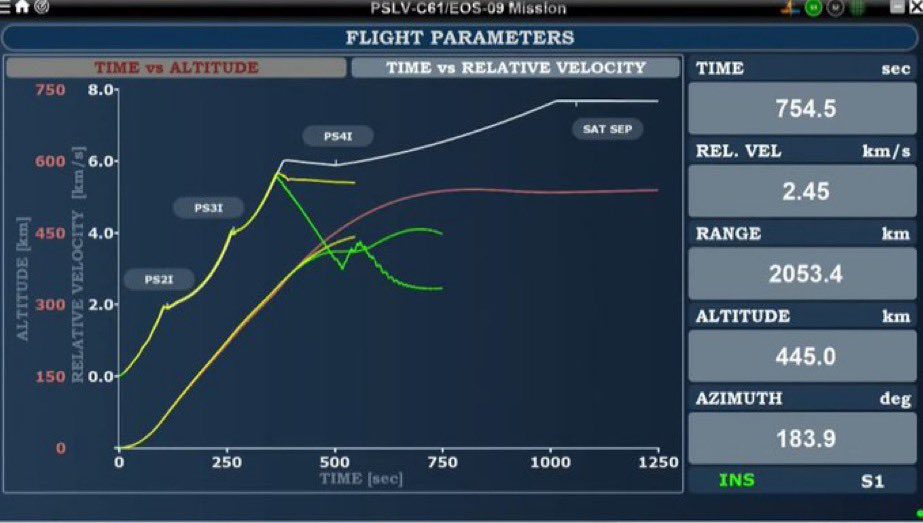The Cygnus NG-11 unmanned cargo spacecraft, which is named Roger Chaffee after the astronaut killed in the 1967 Apollo 1 fire, was launched into a low Earth orbit on its way to the International Space Station (ISS) from the Mid-Atlantic Regional Spaceport (MARS) based at Wallops Island, Virginia. The launch took place on an Antares 230 rocket at 2023 GMT on 17 April 2019.

The sign points the way: Antares 230 rocket launches Cygnus NG-11 (Roger Chaffee) on its way to the International Space Station. Courtesy: Northrop Grumman
Also on the rocket were 13 other satellites which were released from four CSD 3U dispensers on the second stage of Antares rocket second stage a few minutes after it ended its burn.
These were: the SASSI-2 3U-cubesat for the University of Illinois studying how satellites form forms bow shock waves in the very thin atmosphere in low Earth orbit, and twelve experimental “Thinsats” from NearSpaceLaunch for the Virginia Commercial Space Flight Authority. They consist of long but narrow spacecraft consisting of 0.11 m x 0.11 m x 0.01 m Thinsat case units connected together by connecting solar panel “ribbons” and varied in overall stretched out length according to types between 1.3 and 2.7 m.
The Cygnus NG-11’s main role is to act as a disposable supply vessel for the ISS. As such, it flew to the vicinity of the station and was then grappled by the space station’s SSRMS robot arm at 0929 GMT on 19 April and fully “berthed” onto the Unity nadir port at circa 1130 GMT (all times from Jonathan McDowell).
The Cygnus had other satellites (and their dispensers) aboard which are designed to be released from the International Space Station’s JEM module. These include three 1U CubeSats (and their JAXA J-SSOD dispenser) all built by Kyushu Institute of Technology (KIT): Uguisu (for KIT itself), Raavana-1 for the Arthur C. Clarke Institute for Modern Technologies, and the Nepalisat-1 for the Nepal Academy of Space Technology.
Two other dispensers – both from Nanoracks – were carried by the Cygnus NG-11 spacecraft.
The NRSCD-6 which will be delivered into the ISS itself will be used for satellite deployment from the ISS JEM module. It is carrying the VCC collaboration between the universities concerned plus Hampton University, three 1U CubeSat spacecraft are being carried to examine decay rates for three different satellites. The VCC A (Aeternitas) for the Old Dominion University, VCC B (Libertas) for the University of Virginia, and VCC C (Ceres) for Virginia Polytechnic Institute (Virgina Tech).
In addition it is carrying: the 1U CubeSat KRAKsat for AGH University, Krakow, Poland, which will test a new ferrofluid attitude control system, Swiatowid – a Polish 2U CubeSat for SatRevolution testing out a 4.7m resolution imager, and the IOD-1 GEMS Space Applications Catapult Space centre at Harwell, England. It uses a Clydespace-built 3U CubeSat and will test a passive microwave weather sensor supplied by the UK/US Orbital Micro Systems firm with its UK base at Harwell.And finally, EntrySat is a space debris re-entry test 2U CubeSat for Institut superieur de l’aeronautique et de l’espace in Toulouse, France.
The other nanoracks dispenser is the NRCSD-E which is to remain attached to the Cygnus spacecraft so that the satellites can be delivered after undocking from the ISS. The satellites to be released will be the Aerospace Corp’s Aerocube 10A 1.5U CubeSat which is acting as a carrier spacecraft for cloud of radar targets called AC-10a Probe 01 to 29 and will also act as a target optical beacon for Aerocube 10B 1.5U CubeSat which is designed to measure radiation flux and which also carries a steam thruster for testing as it inspects its sister spacecraft.
The Seeker spacecraft is a 3U CubeSat from NASA’s Johnson space centre which itself will be an inspection satellite for the Cygnus NG-11 carrier spacecraft. Kenobi is actually a 3U payload which remains attached to Cygnus to act as a data relay for Seeker.
There will be another deployment device – SEOPS LLC Slingshot – which will be attached onto the Cygnus NG-11 while it is docked to the ISS. It will release CubeSats. But they have yet to arrive on the ISS via Dragon cargo launch.
Finally, the system will be attached to the Chaffee before it departs ISS, and will deploy further cubesats whose identities have not yet been revealed. These cubesats will be delivered to ISS on the next Dragon.







